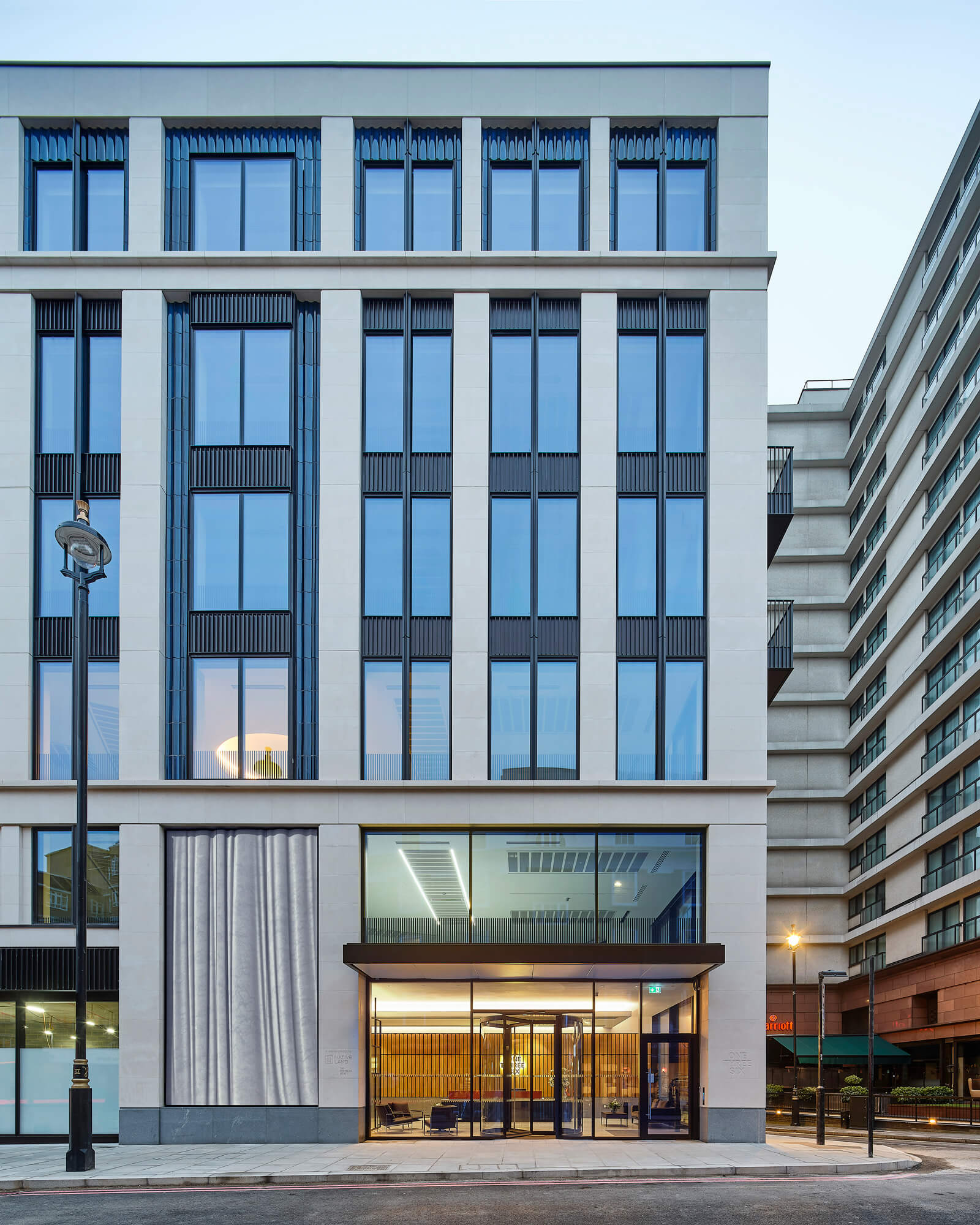
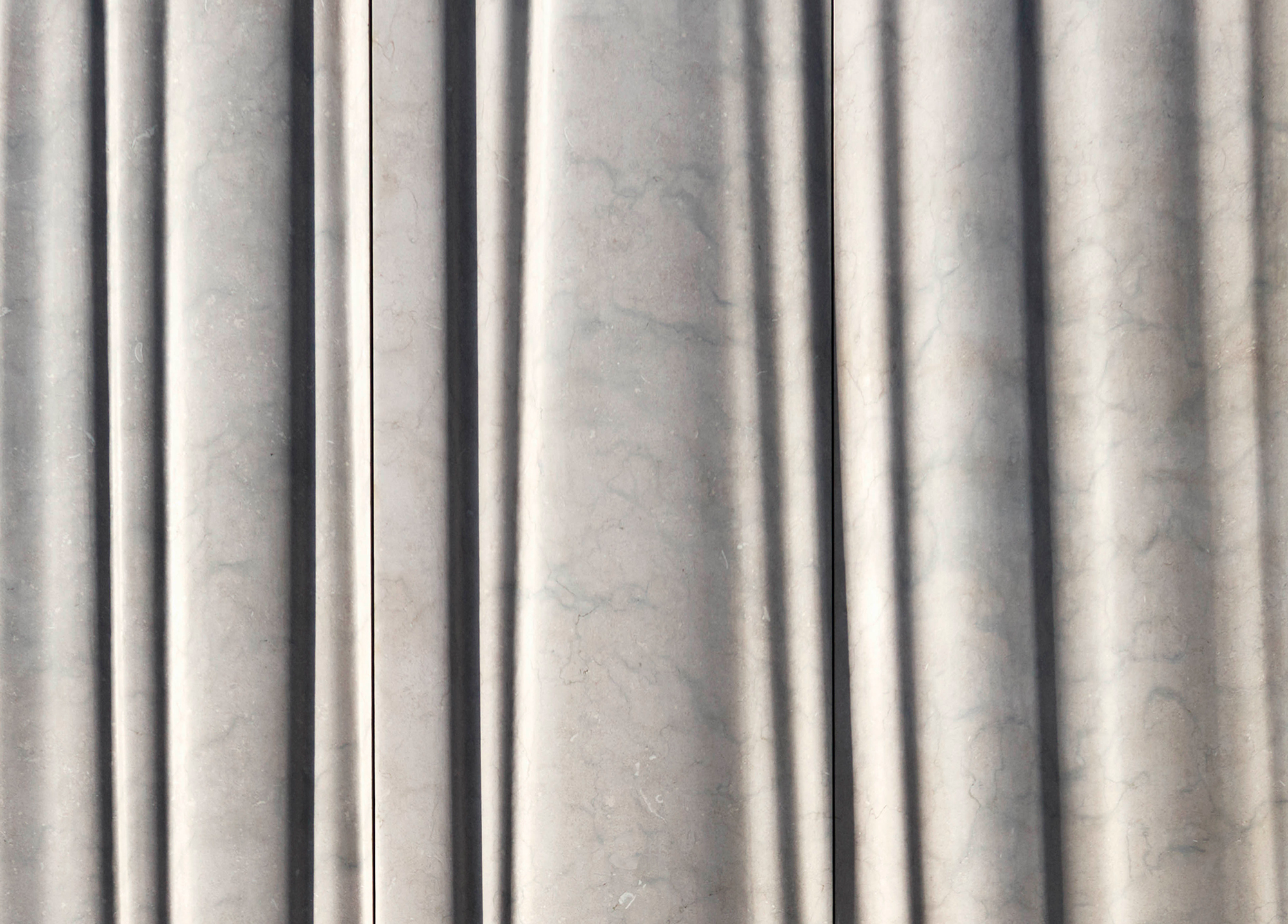

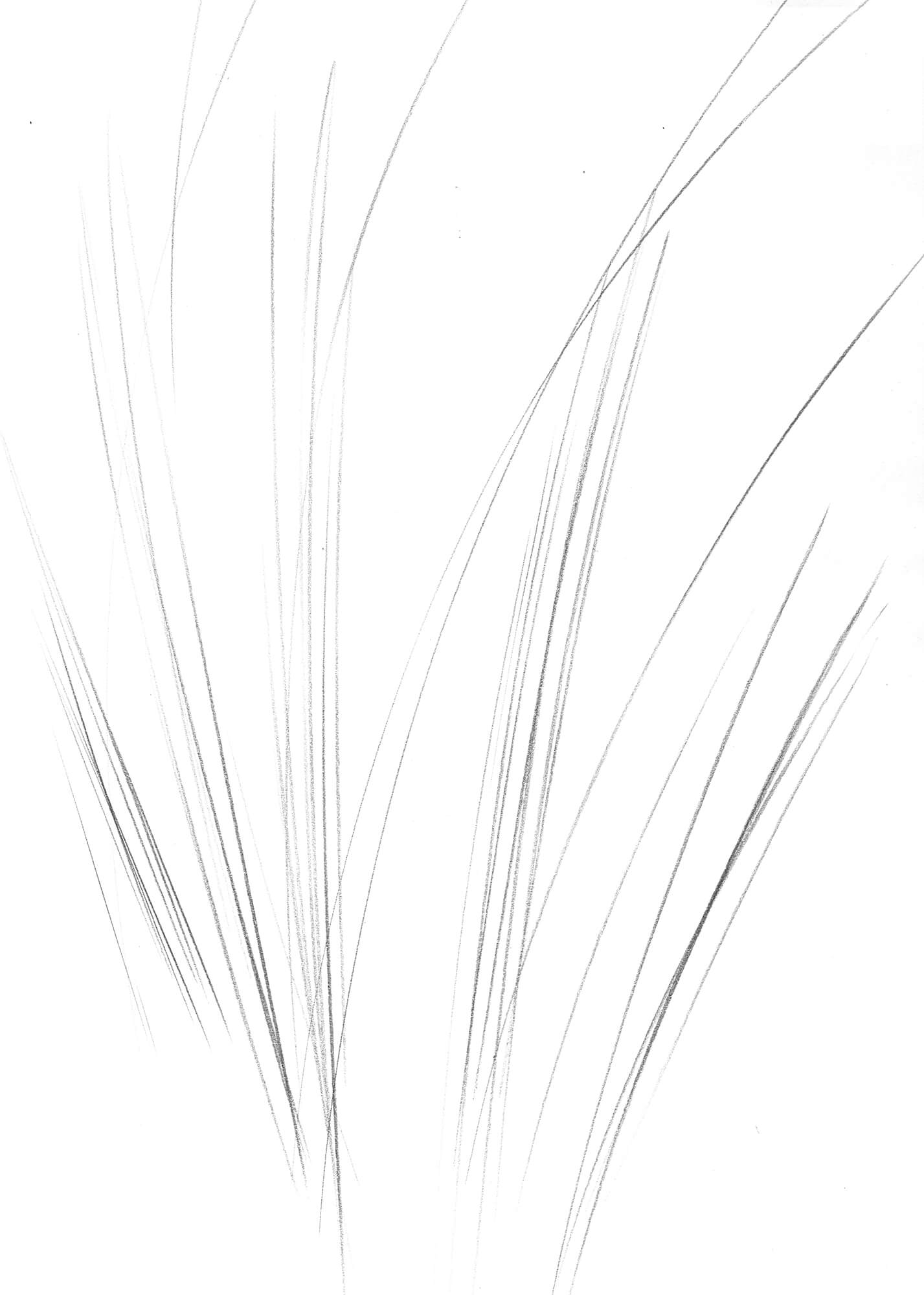
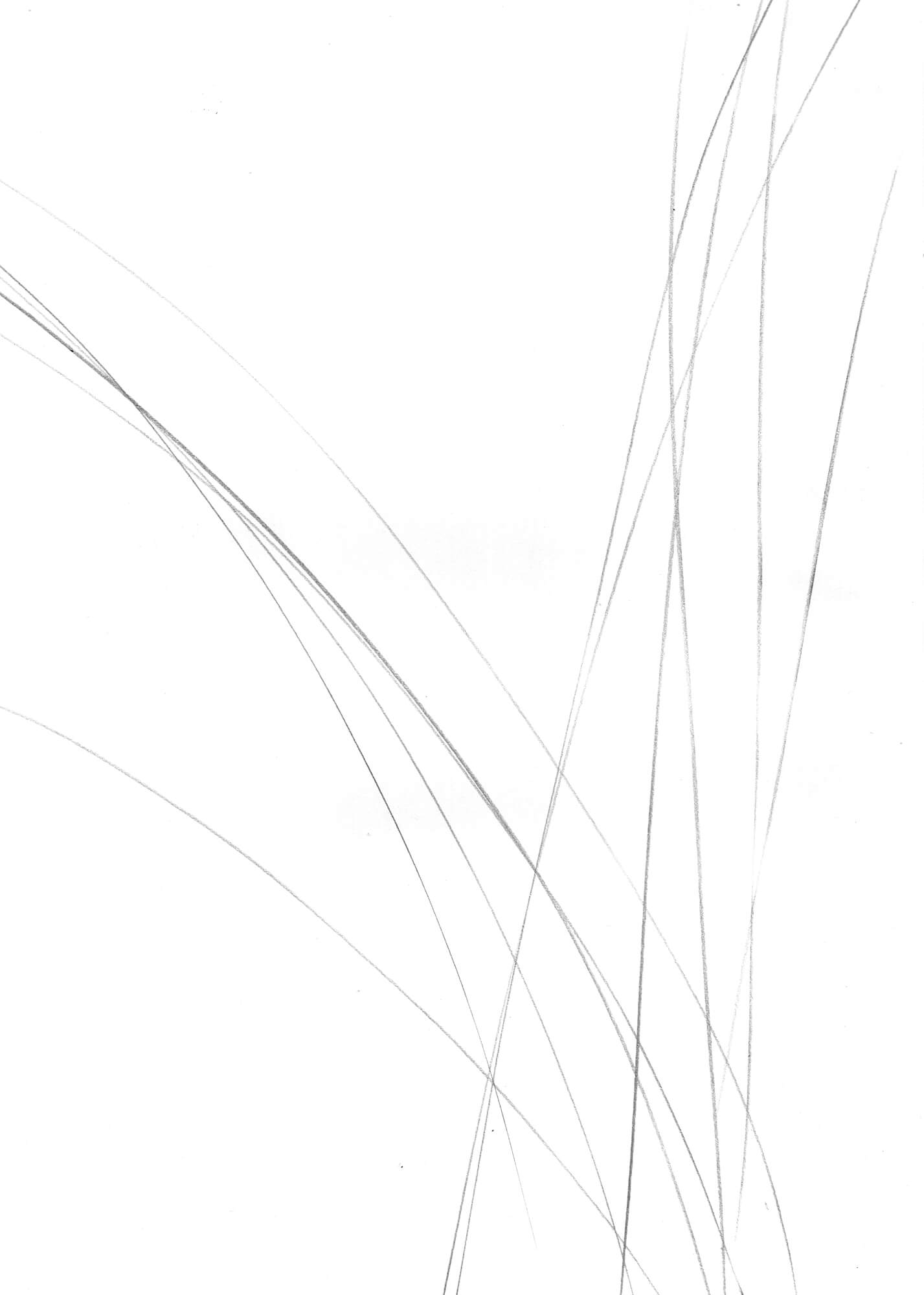
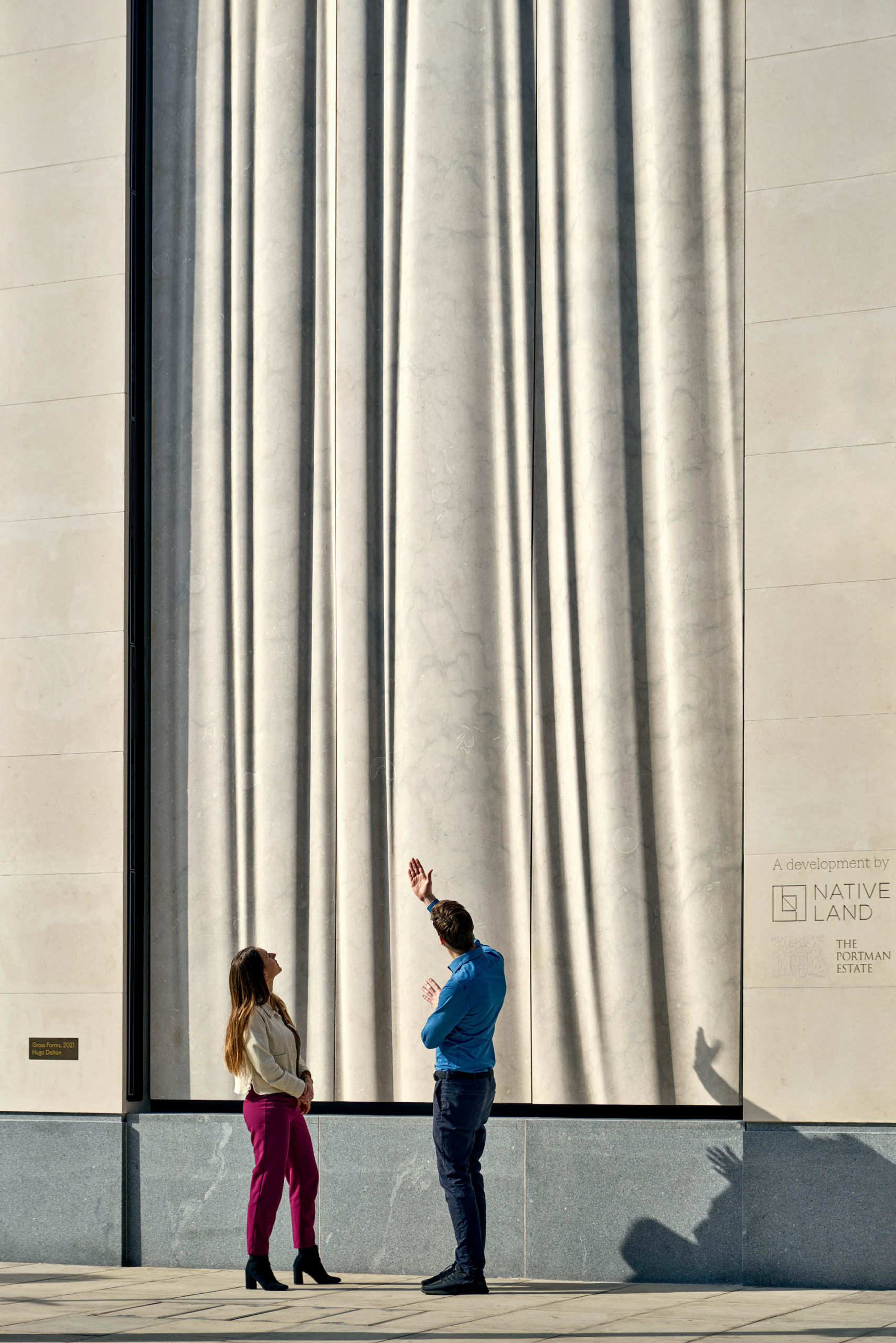
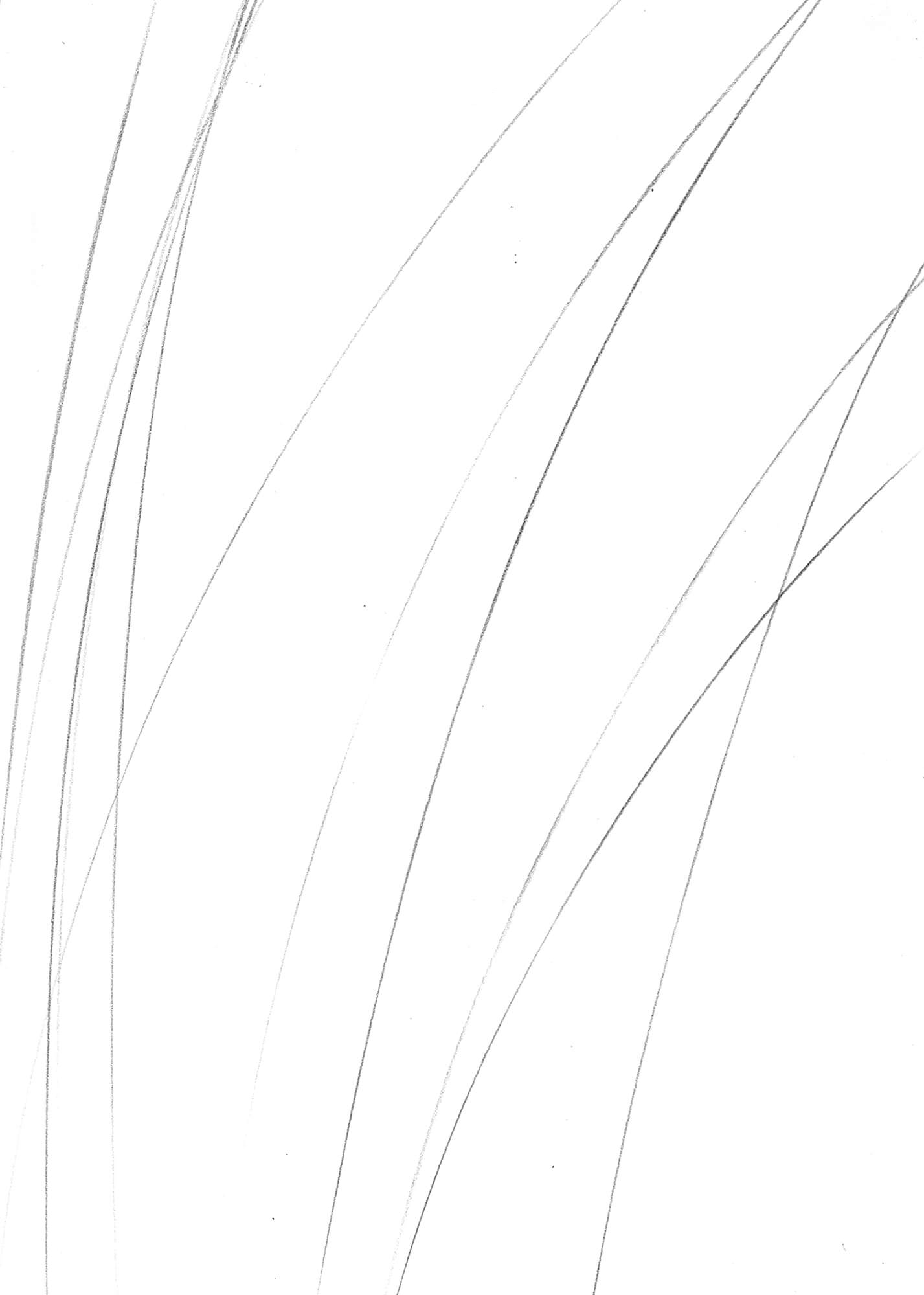
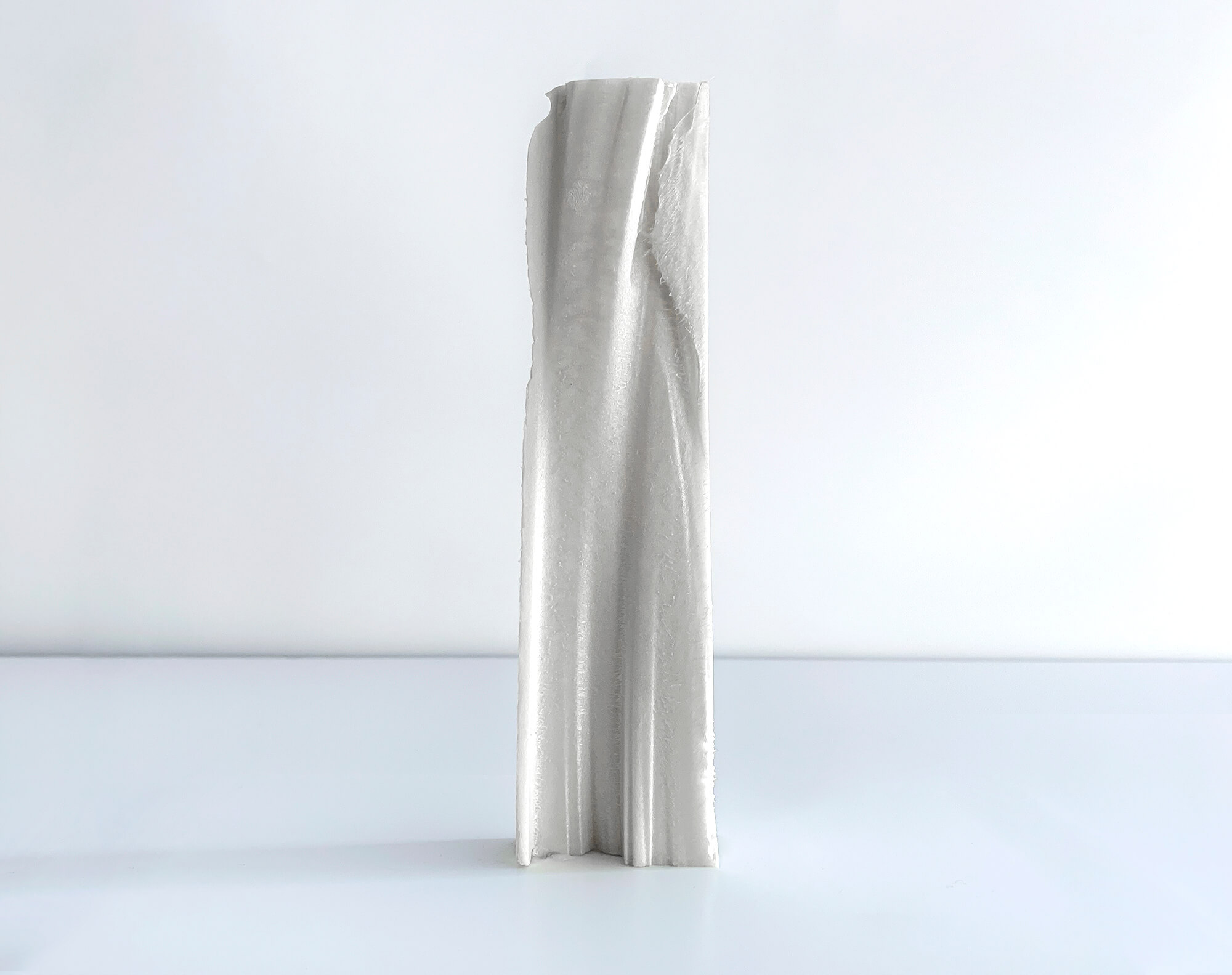
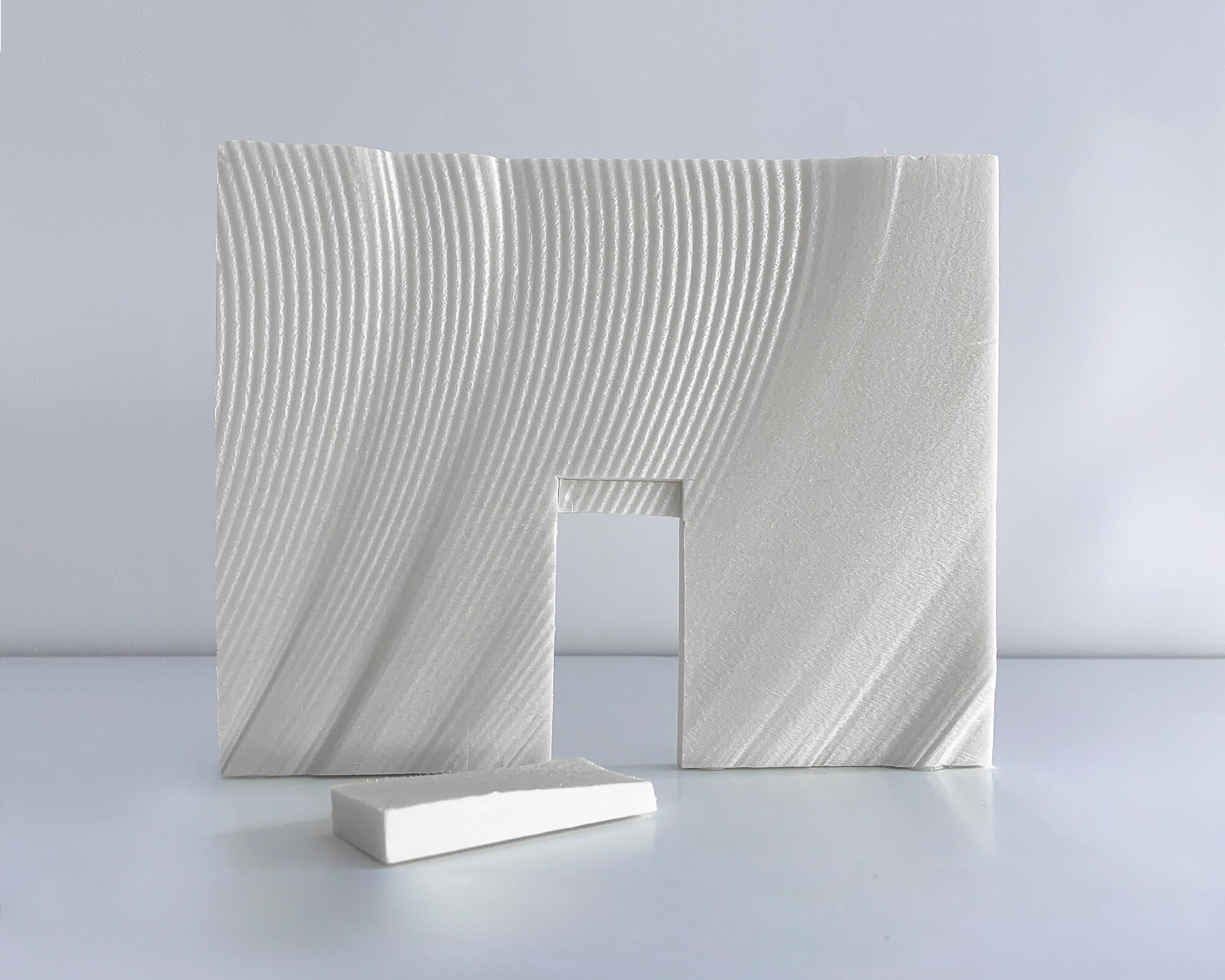
Grass Forms
‘Grass Forms’ a large-scale site-specific sculpture by Hugo Dalton sits within the façade of Regent House on Edgware Road in central London. Working with limestone for the first time, Dalton created a sculptural relief which is embedded within this new building by the architects Stiff + Trevillion.
The work was developed from drawings Dalton made of long grasses in nearby Hyde Park. Walking through the meadow area, the tall grasses engulf you, forming a screen or a shroud that creates a pocket of calm. The gentle swaying movement of the stems is captured in the undulating lines carved into the stone; their slight and graceful movement is rendered solid, amplified on a monumental scale. The carved contours evoke the drapery of classical sculpture, here pushed towards an abstraction that renders the work contemporary.



